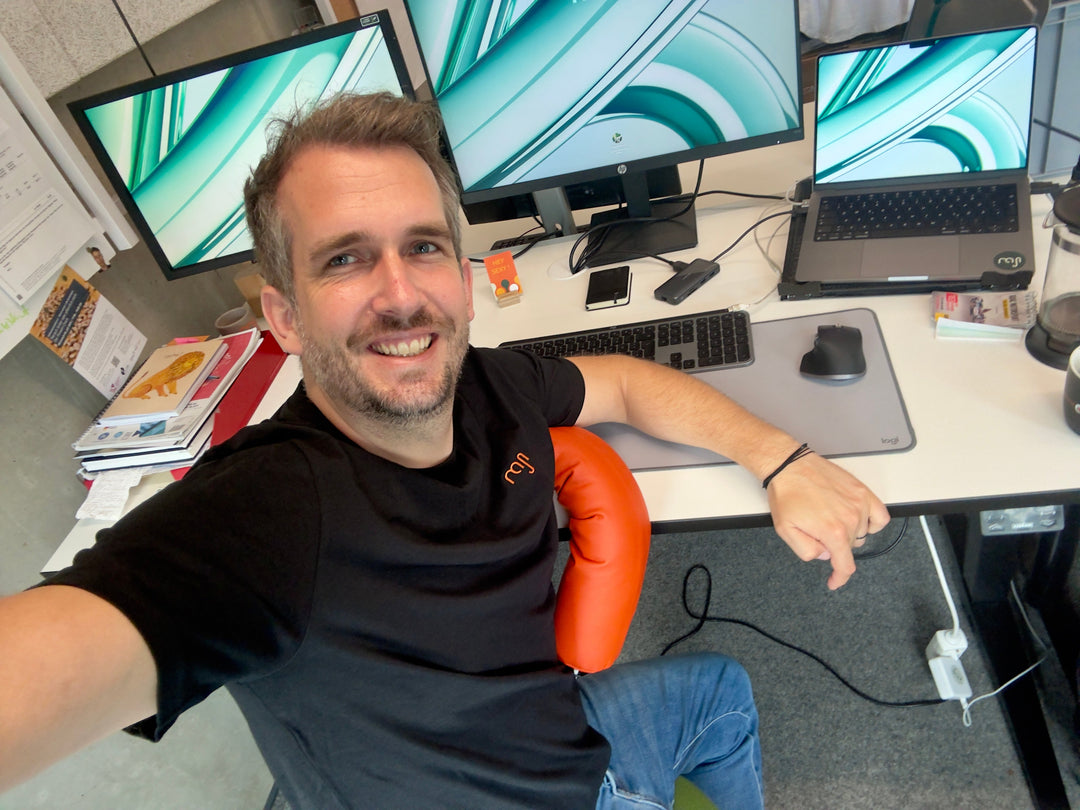How to combat tension: 4 little-known muscles that suffer when sitting

How to relieve tension in these 4 lesser-known muscles and strengthen them
Tension in these four muscles can make working at a desk very uncomfortable, and we'll show you what you can do about it. In our modern working world, many of us spend countless hours at our desks. But this sedentary activity can lead to uncomfortable tension, particularly in certain muscles that are often overlooked. In this article, we introduce four such muscles and show you how to effectively counteract tension.
1. Iliopsoas muscle
The iliopsoas muscle, also known as the hip flexor, is a deep muscle composed of the psoas major and iliacus muscles. It connects the lumbar spine to the thigh and plays a crucial role in hip flexion, as well as walking and running.
Why he tenses up:
Prolonged sitting can cause the iliopsoas muscle to shorten and tighten due to the constant strain it places on it in this position. This can lead to lower back pain and limited hip mobility.
What you can do about it:
· Stretching exercises : A simple stretch for the iliopsoas is the lunge. Step one foot far forward and lower your back knee to the floor. Push your hips forward until you feel a stretch in the hip flexor side.
· Strengthening: Exercises such as the bridge or planks can help strengthen the surrounding muscles and relieve pressure on the iliopsoas.
· Regular breaks: Get up regularly during the workday and take short walks to relieve pressure on your hip flexors.
2. Quadratus Lumborum Muscle
The Quadratus Lumborum (QL) muscle is located deep in the lower back and connects the pelvis to the lower ribs and lumbar spine. It stabilizes the spine and supports lateral movements of the torso.
Why he tenses up:
Poor sitting posture, such as sagging the pelvis or sitting asymmetrically, can overload the lumbar spine and lead to tension. This often manifests itself in back pain and limited trunk mobility.
What you can do about it:
· Stretching exercises: One effective stretch is the side bend. Stand upright, raise one arm above your head, and bend to the side until you feel a stretch in the opposite lower back.
· Strengthening: Exercises like side planks strengthen the QL and improve core stability.
· Postural awareness: Maintain an ergonomic sitting posture and, if necessary, use ergonomic aids to ensure even strain on the core muscles. For example, the paddo can also help with sitting upright.
3. Levator scapulae muscle
The levator scapulae muscle connects the upper part of the shoulder blades to the cervical spine. It is responsible for lifting the shoulder blades and stabilizing the neck.
Why he tenses up:
A forward-leaning head posture, as is common when working at a computer, can overload and strain the levator scapulae muscle. This leads to neck and shoulder pain and tension headaches.
What you can do about it:
· Stretching exercises: To stretch the levator scapulae, you can tilt your head to the side and simultaneously pull the opposite shoulder down.
· Strengthening: Back exercises such as shoulder blade presses or rowing exercises strengthen the surrounding muscles and relieve the strain on the levator scapulae.
· Screen position: Make sure your computer screen is at eye level to avoid a forward-leaning head posture.
4. Pectoralis Major Muscle
The pectoralis major is the large chest muscle that connects the sternum, clavicles, and upper arms. It plays an important role in arm movement and stabilizing the shoulder girdle.
Why he tenses up:
A forward-leaning posture and constantly working with arms extended forward can shorten and tighten the pectoralis major. This leads to chest and shoulder pain and limited arm mobility.
What you can do about it:
· Stretching exercises: A simple stretch for the pectoralis major is to place your arms in a doorway and lean your torso forward until you feel a stretch in your chest.
· Strengthening: Back exercises such as rowing and shoulder blade presses strengthen the antagonists of the pectoralis major and improve posture.
· Posture awareness: Make sure to pull your shoulders back regularly and maintain an upright posture.
Conclusion
Working at a desk can lead to tension in unfamiliar muscles such as the iliopsoas, quadratus lumborum, levator scapulae, and pectoralis major. Targeted stretches, strengthening exercises, and posture awareness can counteract these tensions and create a better work environment in the long run. Regular breaks and ergonomic adjustments that suit your work style will help keep your body healthy and pain-free.
By the way, an unfavorable posture can cost you up to 40% of your performance reserves rob at the desk.







Leave a comment